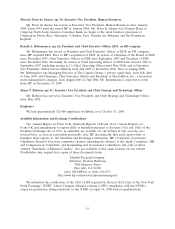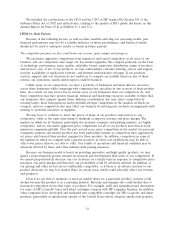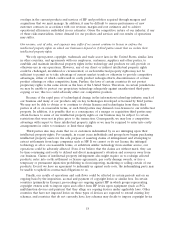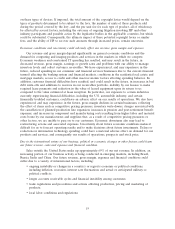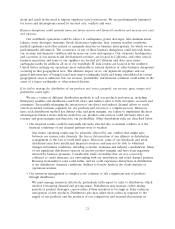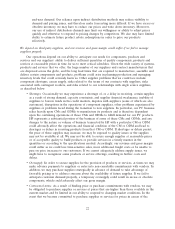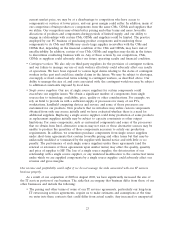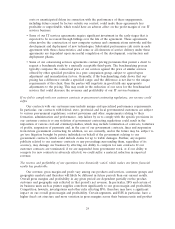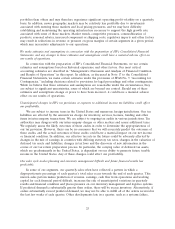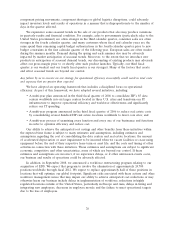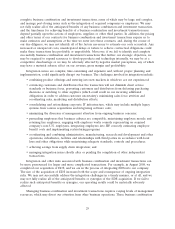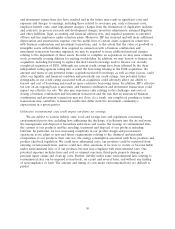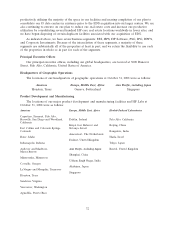HP 2008 Annual Report Download - page 29
Download and view the complete annual report
Please find page 29 of the 2008 HP annual report below. You can navigate through the pages in the report by either clicking on the pages listed below, or by using the keyword search tool below to find specific information within the annual report.current market price, we may be at a disadvantage to competitors who have access to
components or services at lower prices, and our gross margin could suffer. In addition, many of
our competitors obtain products or components from the same CMs, ODMs and suppliers that
we utilize. Our competitors may obtain better pricing and other terms and more favorable
allocations of products and components during periods of limited supply, and our ability to
engage in relationships with certain CMs, ODMs and suppliers could be limited. The practice
employed by our PC business of purchasing product components and transferring those
components to its CMs and ODMs may create large supplier receivables with the CMs and
ODMs that, depending on the financial condition of the CMs and ODMs, may have risk of
uncollectability. In addition, certain of our CMs, ODMs and suppliers may decide in the future
to discontinue conducting business with us. Any of these actions by our competitors, CMs,
ODMs or suppliers could adversely affect our future operating results and financial condition.
•Contingent workers. We also rely on third-party suppliers for the provision of contingent workers,
and our failure to manage our use of such workers effectively could adversely affect our results
of operations. We have been exposed to various legal claims relating to the status of contingent
workers in the past and could face similar claims in the future. We may be subject to shortages,
oversupply or fixed contractual terms relating to contingent workers, as described above. Our
ability to manage the size of, and costs associated with, the contingent workforce may be subject
to additional constraints imposed by local laws.
•Single source suppliers. Our use of single source suppliers for certain components could
exacerbate our supplier issues. We obtain a significant number of components from single
sources due to technology, availability, price, quality or other considerations. For example, we
rely on Intel to provide us with a sufficient supply of processors for many of our PCs,
workstations, handheld computing devices and servers, and some of those processors are
customized for our products. New products that we introduce may utilize custom components
obtained from only one source initially until we have evaluated whether there is a need for
additional suppliers. Replacing a single source supplier could delay production of some products
as replacement suppliers initially may be subject to capacity constraints or other output
limitations. For some components, such as customized components and some of the processors
that we obtain from Intel, alternative sources may not exist or those alternative sources may be
unable to produce the quantities of those components necessary to satisfy our production
requirements. In addition, we sometimes purchase components from single source suppliers
under short-term agreements that contain favorable pricing and other terms but that may be
unilaterally modified or terminated by the supplier with limited notice and with little or no
penalty. The performance of such single source suppliers under those agreements (and the
renewal or extension of those agreements upon similar terms) may affect the quality, quantity
and price of supplies to HP. The loss of a single source supplier, the deterioration of our
relationship with a single source supplier, or any unilateral modification to the contractual terms
under which we are supplied components by a single source supplier could adversely affect our
revenue and gross margins.
Our revenue and profitability could suffer if we do not manage the risks associated with our IT services
business properly.
As a result of our acquisition of EDS in August 2008, we have significantly increased the size of
the IT services portion of our business. The risks that accompany that business differ from those of our
other businesses and include the following:
• The pricing and other terms of some of our IT services agreements, particularly our long-term
IT outsourcing services agreements, require us to make estimates and assumptions at the time
we enter into these contracts that could differ from actual results. Any increased or unexpected
23




